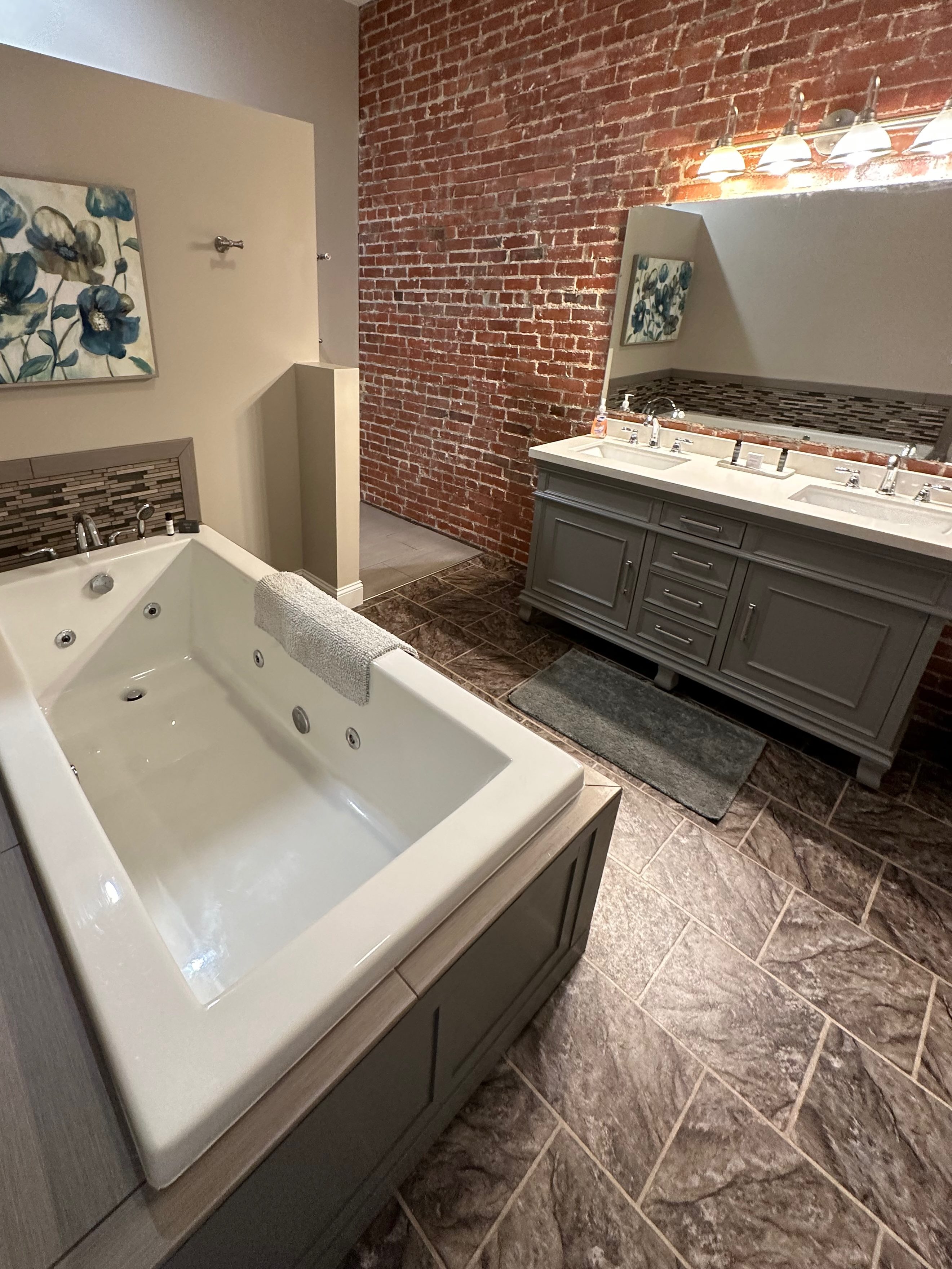What better way to refuel after a day on the trails than with some tasty Kansas City barbecue?
We know that Kansas City exists in both Kansas and Missouri, but as the Kansas Trail Guide, we’re going to stick on the Kansas side. Even by narrowing Kansas City barbecue options down to just the Kansas side of the city, there’s no way to pick just one. So here are three of our favorite Kansas City barbecue restaurants that all got their start on the barbecue competition circuit. Are these in your top three? What are your favorite Kansas City barbecue places? Let us know in the comments!
Joe’s Kansas City Bar-B-Que
Joe’s Kansas City Barbeque has its roots in barbecue competitions – the team of Slaughterhouse Five went on to win award after award at competitions across the nation before they opened their barbecue restaurant in a gas station at 47th Avenue and Mission Road — it used to be Oklahoma Joe’s but they updated the name to Joe’s Kansas City BBQ in 2014. While you can still go to that original gas station location, they have restaurants in Olathe and Leawood.
Anthony Bourdain named Joe’s Kansas City BBQ as one of his 13 restaurants to visit before you die in Men’s Health in 2011, and we don’t disagree. The Z-Man Sandwich is popular, it’s slow-smoked beef brisket, smoked provolone cheese, topped with two crispy onion rings, on a toasted Kaiser roll. The ribs are outstanding, and of their sides, it’s a tie for us between their mac and cheese and dirty rice. If you’re lucky, there will be some burnt ends available, but you really can’t go wrong with pretty much anything on the menu.
There might be a line, but it usually moves pretty quickly and you can always order online and get it to go if you’re in more of a hurry. And if you’re not in the area, you can even put in an order to be shipped, and your award-winning meat will show up at your house in a cooler.
Hours: Monday to Thursday: 11am to 9pm, Friday and Saturday: 11am to 10pm. Closed Sunday
Locations: Original gas station location: 3002 West 47th Avenue, Kansas City, KS 66103, 913-722-3366
11950 South Strang Line Road, Olathe, KS 66062, 913-782-6858
11723 Roe Avenue, Leawood, KS 66211, 913-338-5151
Q39
Q39 is another barbecue restaurant that got its start in the competition world. Chef Rob Magee was classically trained, and he competed with the Munchin’ Hogs team to take home multiple trophies before opening Q39 in 2014 in Midtown. In 2017, they opened another one in Overland Park, so that fits our Kansas barbecue requirement.
At both locations, you definitely want to make a reservation if you want to avoid a wait, particularly on Fridays and Saturdays — you can make one online. You can also order it online and get it to go.
Their mac and cheese is outstanding, the ribs are fall off the bone delicious, and their pork belly appetizer comes with Mexican street corn and a chipotle BBQ sauce. They’ve got some unexpected items from a barbecue restaurant on their menu, like the smoked beef brisket poutine, bacon-wrapped shrimp, and wood-fired grilled smoked salmon salad. I’ve heard the apple crumble with ice cream is tasty, but I’ve never saved enough room for dessert. Maybe next time.
Hours: Sunday to Thursday: 11am to 9pm, Friday to Saturday: 11am to 9:30m
Locations: 11051 Antioch Rd, Overland Park, KS 66210, 913-951-4500
Slap’s BBQ
Slap’s BBQ got its name from founding brothers Mike and Joe Pearce’s Squeal Like A Pig bbq competition team. They tend to sell out, particularly of their ribs and burnt ends, so maybe pick this one for lunch if you have your heart set on something specific. There’s also likely to be a line, but you can order online to pick up if you’re in a rush. They’ve got a tender, thick-cut brisket, they put bacon in their mac & cheese (which is always a win for me), and their sausage game is on point, particularly the jalapeno cheddar sausage. They’ve also got daily specials — burnt end street tacos on Tuesdays, smoked chicken wings on Wednesdays, and spicy fried chicken sandwich on Thursdays.
They do catering, and though I’ve never tried that option, it seems like it would be definite crowd pleaser. And then even offer classes on how to get into the bbq competition scene.
Hours: Sunday to Saturday: 11am to 7pm or until they sell out.
Location: 533 Central Avenue, Kansas City, KS 66101, 913-213-3736





















 They mate for life, which can be 20 years. Mate selection happens after courtship in the form of dancing — leaping, bobbing their heads, displaying their wings. One example is a male will fling a piece of grass or vegetation into the air as if to say “Look at me, choose me, I can build a good nest.”
They mate for life, which can be 20 years. Mate selection happens after courtship in the form of dancing — leaping, bobbing their heads, displaying their wings. One example is a male will fling a piece of grass or vegetation into the air as if to say “Look at me, choose me, I can build a good nest.”